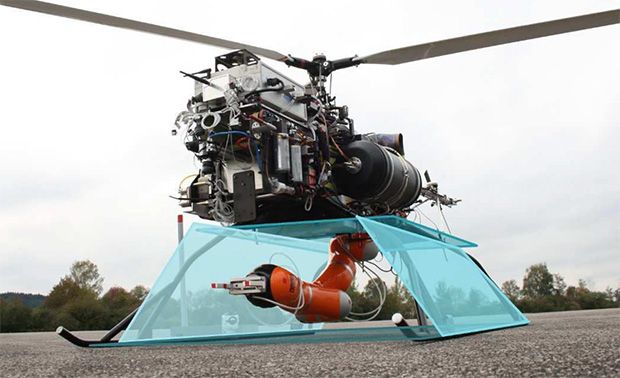EPFL scientists from the Biorobotics Laboratory (BIOROB) have developed small robotic modules that can change their shape to create reconfigurable furniture. "Eventually, all you'll need to do is program the layout of a bedroom or a conference room, then let the modules do the work," says Auke Ijspeert, head of the BIOROB. His "Roombots" project, co-funded by the National Centre for Competence in Research Robotics, is the subject of an article that has been published in the online version of the journal Robotics and Autonomous Systems.
Retractable claws
Like Lego bricks, Roombots pieces can be stacked upon each other to create various structures. Each 22 cm-long piece, which looks like two large dice joined together, has a wireless connection. Inside are a battery and three motors that allow the module to pivot with three degrees of freedom. The modules have retractable "claws" that they use to attach to other pieces and form larger structures. With a series of rotations and connections, the modules can change shape and become any of a variety of objects and pieces of furniture. "In order to keep costs down and ensure solidity, we have prioritized the construction of hybrid furniture, in other words, objects made up of both robotic modules and solid "passive" elements," says Auke Ijspeert.
In order to metamorphose and to attach to passive elements, the Roombots need to anchor themselves to something, so the researchers developed a special surface with holes adapted to the Roombots' mechanical claws. Fixed to the walls, floor and already existing pieces of furniture, these surfaces act as interfaces between the modules and their environment. The little robots can then climb the walls of a room, or attach themselves to "passive" elements on the furniture to form mobile tables or lamps that follow you around the room. "It could be very useful for disabled individuals to be able to ask objects to come closer to them, or to move out of the way," notes Auke Ijspeert.
The Roombots project is a true technological challenge, and for the moment it includes four functional modules with an autonomy of one-hour - still not enough to create complete pieces of furniture, but enough to build simple structures and hybrid combinations.
The potential for innovative applications is huge. Students from the French national school for advanced studies in design (ENSCI Les Ateliers) have risen to the challenge put out by Ijspeert's lab, with the help of EPFL Ecal-Lab, and come up with some concepts. Their ideas, shared via a series of videos, pique the imagination: flower pots that can move from window to window around the façade of an entire building; Roombots that make lighting components and sound systems modular and adaptable are just two examples. "We designed the Roombots elements in such a way that they blend into the background of a room and make the users' lives easier, while maintaining a certain aesthetic quality," says Ijspeert. "We're open to any possibility."




